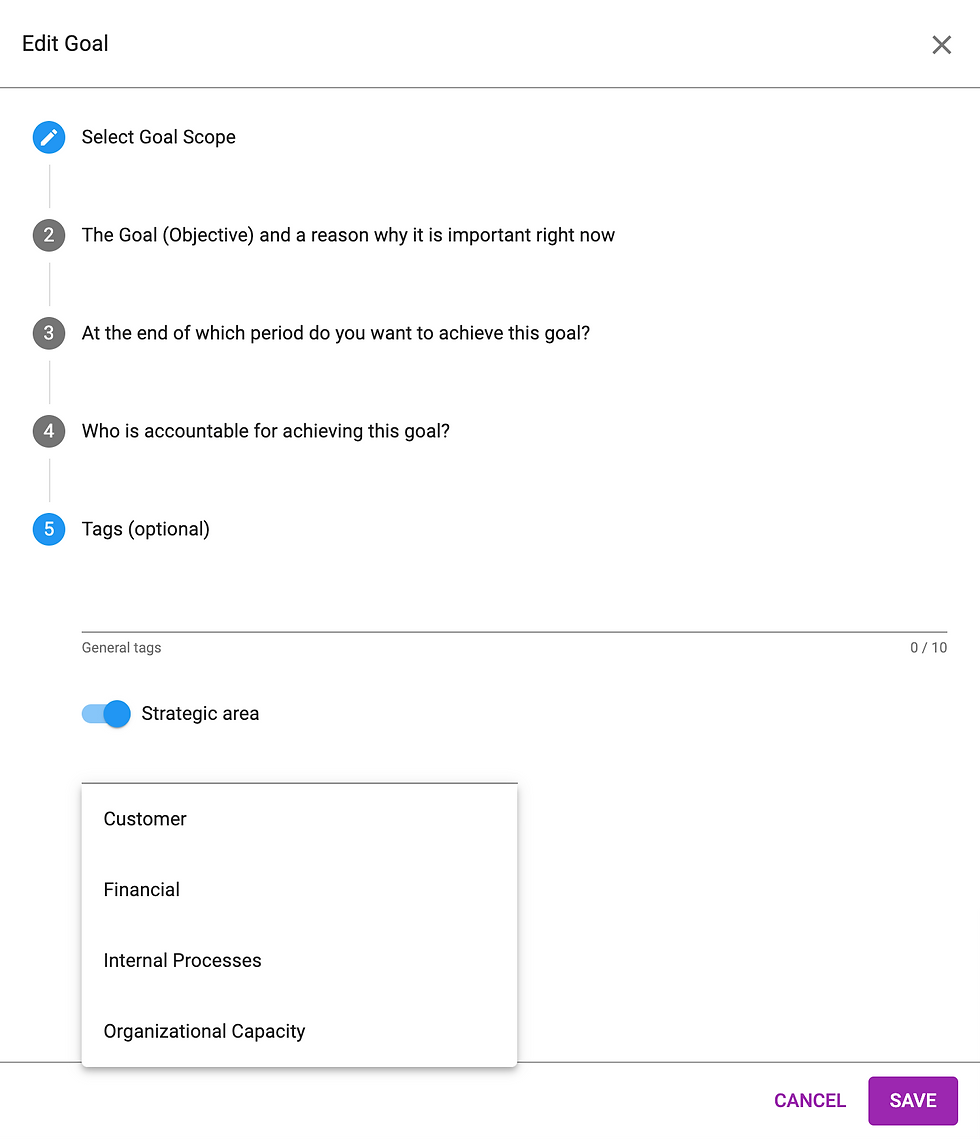Driving Strategy with OKRs
- Borut Bolčina

- Dec 13, 2022
- 2 min read
A new version (2022.22) of Agile Tools is available. With this release, we are bringing you the initial version of the Strategy "module". So what's a strategy?
"A strategy is an integrative set of choices that positions you on a playing field of your choice in a way that you win.” -Roger Martin
The Strategy part of the Agile Tools is currently offering you to define top-level concepts like Mission, Vision, and Values. You don't have to describe them all. Use the ones you have or want to have, and then stick to the vocabulary. With this, you set the context for the company OKRs.

Even more, you can define the long-running OKRs, like three or even 5-years long, and link them to, say, your Vision.
In the tool, you can create a Strategy by defining its name and period. Then you define Strategic Areas. By default, four are available: Financial, Customer, Organizational Capacity, and Internal Processes. If you find them familiar, you may have come across a Balanced Scorecard strategic framework.
BSC was first proposed in 1992 by David Norton and Robert Kaplan, who modified earlier metric performance indicators to add nonfinancial information.
You can, of course, define your own Strategic Areas, otherwise known as "perspectives" or "aspects" of a business.
In a Balanced Scorecard, you put metrics (KPIs) in each perspective to analyze them to reinforce good organizational behavior.
In Agile Tools, you create OKRs in Strategic Areas. As Agile Tools greatly encourages creating Key Results based on metrics, you can see the similarity here.

We have changed the Goal creating wizard to include tagging in its last step. You can use general tags and/or use the predefined Strategic Areas if you are creating a long-running OKR.

As mentioned at the beginning, the Strategy implementation is in its infancy, with many more ideas to choose from and implement. It is an iterative process with a feedback loop - help us by visiting and posting at https://feedback.agile-tools.io/feature-requests.
What is coming next?
With the next release, you will be able to create tasks, or, as we call them - Value Items. Initially, it will look simplistic, but under the hood, the platform will be ready to support powerful product/project management features.
The outcome of the next release will enable linking daily work with Key Results, thus enabling the visibility of how we daily contribute (or not!) to the goals we set.



Comments